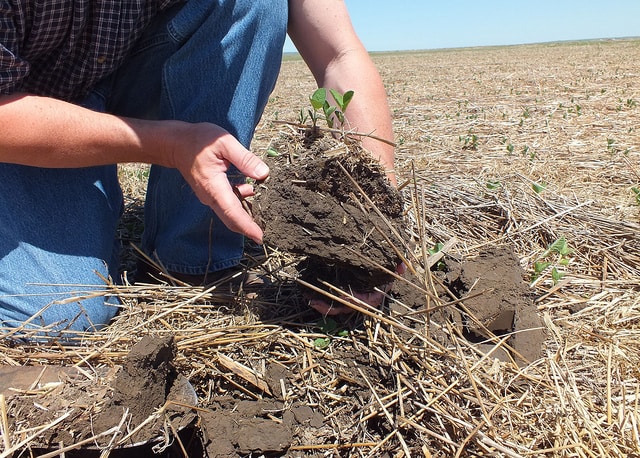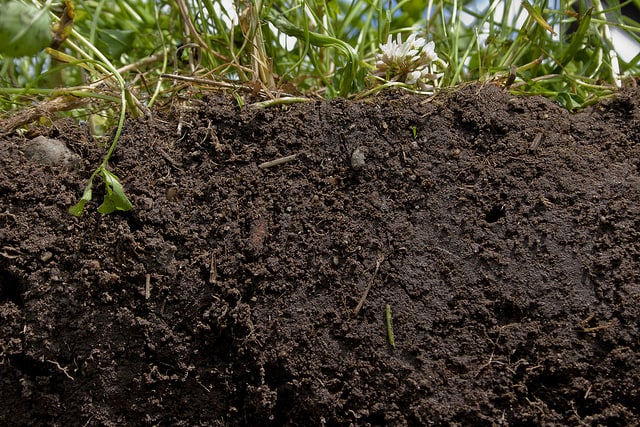Travel Tips
Lorem ipsum dolor sit amet, consectetur adipiscing elit.

Soil Conservation is the name given to a handful of techniques aimed at preserving the soil. Soil loss and loss of soil fertility can be traced back to several causes, including over-use, erosion, salinization, and chemical contamination. Unsustainable subsistence farming and the slash and burn clearing methods used in some less developed regions can often cause deforestation, loss of soil nutrients, erosion on a massive scale, and sometimes even complete desertification.
Soil erosion removes the topsoil that is necessary for organic matter, nutrients, microorganisms that are required for plants to grow and shine. Soil conservation is one such step that protects the soil from being washed away. The soil then ends up in aquatic resources bringing in pesticides and fertilizers used on agricultural land.
Many different techniques have been invented throughout the years with the aim of preserving the nutrient level of the soil and preventing erosion. Let’s take a look at some of them.
Originating in ancient Phoenicia, Contour Plowing involves plowing grooves into the desired farmland, then planting the crop furrows in the grooves and following the contours. It a very effective way of farmland on slopes to prevent runoff and improve crop yields.
Terracing is a method of carving multiple, flat leveled areas into hills. Steps are formed by the terraces, which are surrounded by a mud wall to prevent runoff and hold the soil nutrients in the beds. More commonly found in lesser developed nations due to the difficulty of using mechanized farming equipment in the terraces. It is quite popular in Asia for planting rice.
A more enhanced version of Contour Plowing, maximum water retention is achieved by taking into account all the watershed properties when making the contour lines. The Keyline refers to topographic features linked to water flow. This allows the water to run off directly into an existing water channel, and prevent soil erosion caused by the water.
This is the practice of planting trees, shrubs, and ground cover around the perimeter of your farmland, which impedes surface flows and helps keep nutrients in the farmed soil. Using the grass way is a specialized way of handling perimeter runoff that uses surface friction to channel and dissipate runoff.
Rows of tall trees are used in dense patterns around the farmland and prevent wind erosion. Evergreen trees can provide year-round protection, but deciduous trees can be adequate as long as foliage is apparent during the seasons when the soil is bare.
Cover crops such as turnips and radishes are rotated with cash crops to blanket the soil all year- round and produce green manure that replenishes nitrogen and other critical nutrients. Using cover crops can also suppress weeds.
It’s a mixture of farming methods that intends to mimic the biology of virgin land. These practices can be used to prevent erosion and even restore damaged soil and encourage plant growth.
Eliminating the use of nitrogen fertilizer and fungicides can increase yields and protect crops from drought and flooding.
Planting grass in heavily eroded areas is called an agrostological measure. Ley farming practices cultivating grass in rotation with regular crops help to increase the nutrient level in the soils. When the grass is harvested, it can be used as fodder for cattle. For heavily eroded soil, it is recommended to grow grass for many years to let the soils naturally repair themselves.
This is the method of growing crops year-round without changing the topography of the soil by tilling or contouring. This technique increases the amount of water that penetrates the soil and can increase the organic matter of the soil, which leads to larger yields.
Green manures are a few different crops that can be grown, not for produce or food usage, but grown in order to fertilize the farmland on which it grows. This method can improve the soil structure and suppresses the growth of weeds.
When water evaporates from the soil, it leaves behind its salt. This can lead to damage to soil and nutrient loss. Using humic acids can prevent this or growing crops like saltbush can rejuvenate the soils and replace lost nutrients. High levels of salt in the soil can often be caused by changes made to the water table by damming and other causes.
During floods, stream banks can often cave in. Preventing this by constructing walls along the banks or plant useful tree species will prevent this in the future and prevent soil loss down the stream.
Earthworms provide great benefits of farmland due to the way they burrow under the ground and provide more area for water to rest after it has infiltrated the soil. When these worms excrete egesta, this sits in the soils and gives the crops many nutrients which are absorbed via the roots of the plants.
Earthworm casts contain a vast amount more nutrients than any natural soil in the world, and for that reason should be invited into the soils of farmland to help prevent erosion and will lead to larger crop yields.
To help crops reach higher yields or full potential, sometimes crushed rock or chemical supplements are added to the farmland, this helps combat mineral depletion. Normally used after flooding, it brings substantial amounts of sediment, which can damage the nutrient level of the soil.

This method takes advantage of natural and indigenous microorganisms to produce fertile soils that yield high output and gets rid of the need to use herbicides or pesticides. An improvement in soil health and output is what keeps this method used in the respective areas.
Driveways patios and paved pathways allow precipitation to flow freely off them. As the water flows, it picks up momentum and, in turn, erodes any soil in which it flows over after leaving the impervious surfaces, reducing the amount of these around your farmland and prevent erosion.
In areas with a very low amount of rainfall, crops that require very little water should be grown; this will lead to the preservation of the natural levels of moisture and nutrients in the soil.
A rain garden is a shallow depression in the land which holds and collects running water from impervious surfaces and prevents erosion while saving the nutrients that inevitably get washed away. This also gives you a good bed to grow wetland plants.
A dense amount of trees in a forest leads to a vast network of deep roots that offer a long term solution to soil erosion. Another benefit is the windbreak that these trees can provide.
Contamination of soils due to acid rains and other pollutants can lead to loss of soil fertility. Use a pH indicator monthly to check the levels of acids in the soil and treat the soils with eco-friendly chemicals to prevent loss of crops and low yields.
The growth of indigenous crops is a good way to conserve soil. As the plants have a natural need for the nutrients in the soil in your area, they help to prevent soil erosion. If you grow nonindigenous crops, a recommended tip is to plant indigenous crops around them, in order to prevent soil erosion.
Try not to let overgrazing happen by moving herds around often. If overgrazing occurs, the plants get hardier and more nutritious species forage in order to rebuild the soil. You can also harvest these crops and feed them to the grazers during the winter season.
This is yet another effective method of soil conservation. It refers to the addition of some calcium or magnesium-rich materials to the soil. These materials could include limestone, chalk, marl, etc. When this is done on acidic soils, these materials react in the form of a base and neutralize the acidity of the soil.
The amount of the material to be added per unit volume of the soil is dependent on its CEC or Cation Exchange Capacity. In soils with lower CEC that lack buffering agents like clay and organic matter, over-liming can happen very easily.
Once we know the agricultural systems better, we can conserve the soil better. Agroecology is the study of the ecological systems that are applied to agricultural productions.
The Organization for Economic Cooperation and Development defines it as “the study of the relation of agricultural crops and environment.” Although this term does not apply for any particular agricultural practices, mostly, it is used to refer to the alternate agricultural practices.
The two terms that are quite often mistaken for each other are actually quite different from each other. However, both of them are equally helpful for the purpose of soil conservation. Both of them prevent soil erosion and thus are pretty essential.
Reforestation is the name given to the process by which new crops or plants are planted in an area that once used to bear foliage but now has none. Reforestation brings a piece of land back to life.
Afforestation, on the other hand, is the process by which new crops or plants are planted on a piece of land that had previously been absolutely barren. This is a process that is now undertaken by many government initiatives to facilitate the process of soil conservation.
In order to keep the soil healthy, it is absolutely essential that only proper and required amounts of the correct chemical fertilizer are added to the soil as and when required. It must essentially be remembered that adding an excess of these chemicals to the soil rather poisons it than keeping or making it healthy.
Besides the earthworms that are a real savior for the soil, there are several good microorganisms in the soil that keep it healthy. Their levels in the soil can easily be enhanced by planting the right trees and the right crops or also by using the right type of fertilizers. Once locked in, these microorganisms can do wonders for the soil!
More developed countries can and should share their farming knowledge gained over the years with the lesser developed nations of the world. This will lead to a better quality of soil worldwide and can help prevent famine and solves the food crisis in some parts of the world.